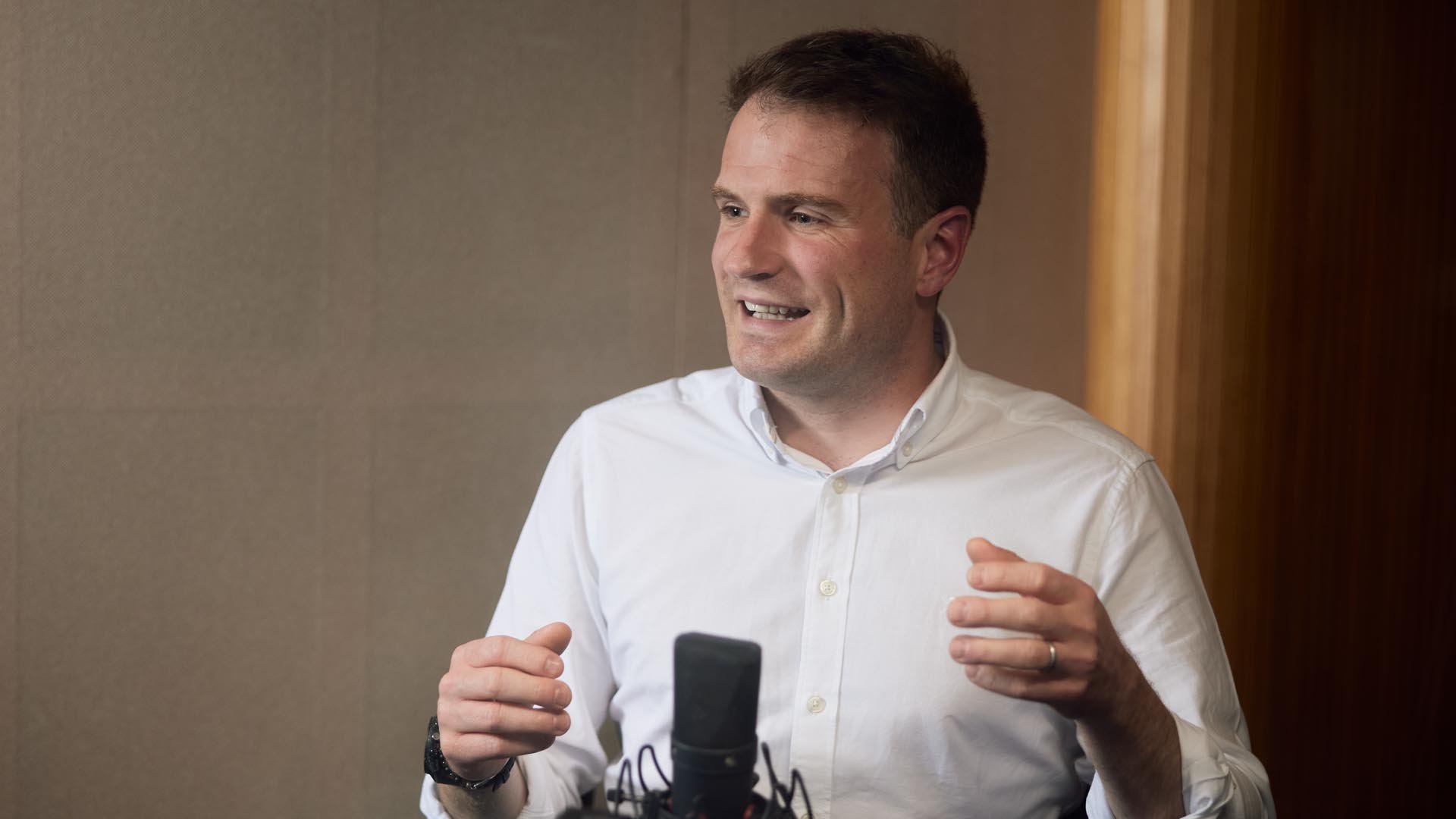
Resilience rewarded
The success of Baillie Gifford’s High Yield Bond Fund over its first 20 years boils down to a key strategy: to identify adaptable businesses that will thrive in tomorrow’s world.
That has meant investing in some glamorous, high growth businesses as well as many lower-profile success stories. Both types require imagination and patience from companies and investors alike, as well as an alignment of interests and commitment.
Over the past two decades, the technology sector, broadly defined, has provided exciting growth opportunities for the fund, including the video games publisher Activision Blizzard, the payment company WorldPay and the cybersecurity firm Crowdstrike.
But investments in firms engaged in more prosaic activities have proven just as important in delivering income and returns from high-yield bonds, including our purchases of debt in the car seat maker Adient, the water-treatment chemicals producer SPCM and the colostomy bag manufacturer Convatec.
A little background for those that need it: high-yield bonds are usually the result of credit rating agencies reporting a borrowing company as posing a greater risk of non-payment than other safer ‘investment grade’ businesses. This might be because the bond issuer:
– has a relatively short track record
– is focused on a niche market
– has a relatively high level of total borrowing.
As a result, the business’s borrowing costs rise. In practice that means paying a higher interest rate to investors who take on its debt. This is known as the ‘high yield’.
Investors can earn an attractive income from a carefully selected and well diversified portfolio of such bonds.
The opportunities to do so have grown considerably since the High Yield Bond Fund’s launch in November 2001. At the time, high-yield bonds were a relatively new import to European markets from the US, where they were pioneered in the late 1980s. Our early selection included the food maker United Biscuits, the currency exchange service Travelex and the broadcaster BSkyB.
The euro currency entered physical circulation in January 2002 and proved a boon to Europe’s bond markets. The value of European currency high-yield bonds in circulation grew quickly, from about £20bn at the time of the fund’s launch to more than £400bn today.
We have long taken an international approach, with investments in South Africa’s Consol Glass, the television company Central European Media and Mexican building materials firm Cemex among investments during our first decade.
But in recent years, our focus has also expanded to encompass the US market, which currently has more than 850 borrowers and over £1tn in bonds outstanding in total.
The growth in volume has coincided with a broader array of issuing companies. At first, the market was dominated by private equity-owned businesses involved in so-called leveraged buyouts. But increasingly other businesses have launched high-yield bonds, including founder and family-owned private companies as well as listed firms.
Over the past 20 years, there are three key lessons that have been and remain critical to us repeatably spotting and acting on these diverse opportunities.
Lesson one: be imaginative
Looking back, you might think our investments were uncontroversial safe bets from day one. The reality was more complicated.
Growth companies often face a cocktail of hazards that can be off-putting to risk-averse corporate bond investors. The firms often need to sacrifice profits and large amounts of cash to cover their spending, and that sometimes includes raising additional debt.
The opportunities they pursue are often tied to technological change. Lending to them can require a leap of faith that customers will value their innovations’ benefits, consider the products affordable, and won’t perceive there to be so much hassle involved that they never try them out.
Deployments can be delayed and run over budget. Marketing can be expensive and require trial and error to perfect. The competitive landscape can be in flux with winners and losers swapping place. Faced with these factors, credit rating agencies often downgrade scores, emphasise risk and wait for results to be proven before showing approval.

Our investment in Netflix’s debt is a great example of us benefiting from the bond market’s hesitancy to embrace potential. We first invested in Netflix bonds in 2017. The company’s transformation was already underway from a DVD home-rental business to the world’s pre-eminent video-on-demand service.
It had reached nearly 100 million paying subscribers in practically every country in the world and was already demonstrating critical and customer success with the programming that it had commissioned and funded. But that wasn’t enough to satisfy the bond market.
To grasp the opportunity, Netflix’s management had borrowed $2.5bn over the previous two years to accelerate its expansion, and its credit rating had been cut as a result. In 2017, it came back to the market seeking a further $3bn.
By this point its success had attracted streaming rivals. And a widely used profitability measure painted an unattractive picture – its earnings before interest taxes, depreciation and amortisation (EBITDA) margin was a lowly 5%.
At Baillie Gifford, we have significant experience of weighing the risks and rewards of companies’ growth strategies. Fundamentally, we are curious and oriented to the long term with a focus on resilience.
In Netflix’s case, the imagination required to visualise a more conventionally creditworthy business had nothing to do with buying an unproven idea and everything to do with backing an ambitious, well-aligned and highly credible management team to continue executing on its vision.
That Netflix today is on the brink of becoming an investment grade company owes a little to the pandemic-inspired subscriber boost of 2020 but far more to the transparent and methodical way that the company has executed its strategy. Using a little imagination helped us to back the company and buy one of our best-performing holdings in recent years.
Lesson two: be patient
The difference between a successful investment and a major disappointment can also be a question of timing. Specifically, having the patience and conviction to ride out the inevitable challenges that even the best managed companies face.
Fortescue Metals Group (FMG) provides society with a basic but essential substance: iron ore. It’s one of many unglamorous companies that are the mainstays of the high-yield market. While the answer to many modern-day challenges is “there’s an app for that”, there is no app that provides millions of tonnes of iron ore. Meeting that demand is the very definition of hard grind.
FMG was established in 2003 to exploit untapped ore deposits in Western Australia and made its first commercial shipment in 2008. It required billions of dollars to build out its mining operations. These include rail infrastructure to transport the commodity to coastal ports and a dedicated five-berth port to allow cargoes to be shipped to key customers in China.
We invested in FMG bonds in 2013. At the time much of the company’s required investment in infrastructure had been made and the remaining operational risks appeared well in hand. Debt levels peaked that year and the company continued to achieve its production and logistical milestones.
There is no app that provides millions of tonnes of iron ore.
What we hadn’t anticipated was a huge drop in iron ore’s price throughout 2014 and 2015 as a fall in demand from Chinese steel producers coincided with the boost to supply that FMG and others had brought to market.
Iron ore had sold for more than $130 per tonne in 2013. It was under $50 by the end of 2015.
FMG’s bonds and shares suffered with every fall in the commodity price. At times its bonds traded at distressed prices of below 60 cents on the dollar. Selling during this period would have destroyed value for the fund from an investment that would eventually fully recover.
We maintained our conviction and continued to hold on the basis that the firm’s long-term prospects remained sound, and our calculations indicated it would stay solvent. Marrying patience and rigorous analysis has repeatedly been key to the fund’s success.

Lesson three: check for alignment
A strong management team combined with committed equity and debt owners can provide a company with confidence and sometimes extra capital during testing times. Conversely companies with weaker management and without committed backers will more readily fold when the going gets tough.
Victoria Plc, a maker of carpet and floor tiles and holder of a Royal Warrant, was one of many businesses facing uncertainty as the Covid pandemic swept the globe in March 2020. The basic logistics of keeping its factories operating and distribution facilities in business was one challenge. Another was that its flooring retailer clients temporarily closed, preventing its products from getting to end consumers.
The support the UK, Spanish and Italian governments provided to it and other businesses was helpful. But we believe Victoria’s bigger success factor was the experience and nimbleness of its management team – a team aligned through its members’ significant ownership of company shares. This allowed the company not simply to survive but to attract a significant new equity investment in October 2020 and to refinance its bonds at a significantly lower annual interest cost in early 2021.
By scrutinising who we invest with, both in terms of the management charged with delivering growth and the capital providers alongside us, we check our alignment and enhance the resilience of our portfolio.
Conclusion
Successfully investing in growth companies is a huge part of what makes Baillie Gifford tick. And through its debt purchases, the High Yield Bond Fund continues to support innovation and value creation while also rewarding our clients, whose funds make this possible.
The same diligence and analytical framework that have helped us identify successful growth businesses have also unlocked the universe of grittier, less glamorous companies in the high-yield market.
Achieving investment success requires the imagination to visualise how companies might respond to the challenges of tomorrow, the patience and rigorous analysis to ride out those challenges when they materialise and an alignment with owners and managers of investee companies.
Our approach has proven its worth over the first 20 years of the fund’s life. We are excited about the quality and variety of opportunities we see today, among more glamorous growing companies as well as the grittier essential pillars of the high-yield market.

Risk factors
The views expressed in this article should not be considered as advice or a recommendation to buy, sell or hold a particular investment. The article contains information and opinion on investments that does not constitute independent investment research, and is therefore not subject to the protections afforded to independent research. This communication was produced and approved in November 2021 and has not been updated subsequently. It represents views held at the time of writing and may not reflect current thinking.
Potential for profit and loss
Please remember that the value of an investment can fall and you may not get back the amount invested.
Bonds issued by companies and governments may be adversely affected by changes in interest rates, expectations of inflation and a decline in the creditworthiness of the bond issuer. The issuers of bonds in which the fund invests may not be able to pay the bond income as promised or could fail to repay the capital amount.
Some of the views expressed are not necessarily those of Baillie Gifford. Investment markets and conditions can change rapidly, therefore the views expressed should not be taken as statements of fact nor should reliance be placed on them when making investment decisions.
Baillie Gifford & Co Limited is wholly owned by Baillie Gifford & Co. Both companies are authorised and regulated by the Financial Conduct Authority and are based at: Calton Square, 1 Greenside Row, Edinburgh EH1 3AN.
Baillie Gifford & Co Limited is authorised and regulated by the Financial Conduct Authority and is an Authorised Corporate Director of OEICs.
The images in this article are for illustrative purposes only.
| 2017 | 2018 | 2019 | 2020 | 2021 | |
|---|---|---|---|---|---|
| High Yield Bond Fund Class B-Inc | 9.2 | 2.0 | 6.8 | 0.3 | 7.7 |
| IA £ High Yield Sector | 7.4 | 1.4 | 4.7 | -0.4 | 10.6 |
Past performance is not a guide to future returns.
The manager believes this is an appropriate comparison for this fund given the investment policy of the fund and the approach taken by the manager when investing.
13459 10004499





